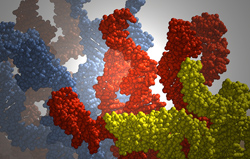Meet the ‘Halo 4’ Engineers Delivering ‘30 Seconds of Fun’ – Early and Often
“Halo 4” launches tomorrow, and millions of fans will start blasting their way through the biggest and most detailed “Halo” universe yet.
REDMOND, Wash. — Nov. 5, 2012 — It happens early and often in every “Halo” game: the ‘30 seconds of fun.’
That phrase refers to the heart-thumping period when players risk pixelated life and limb to take on teeming hordes of enemies. The ‘30 seconds of fun’ mantra began with Bungie, the game studio that created the first five games of the “Halo” franchise.
But “Halo” has always delivered a rich story alongside the action; the game’s universe has spawned comic books and New York Times bestselling novels. “Halo” takes the Goldilocks approach to gaming: it doesn’t exhaust you with long storytelling animations nor numb you with nonstop battles. It finds a middle ground: It’s just right. (more…)

